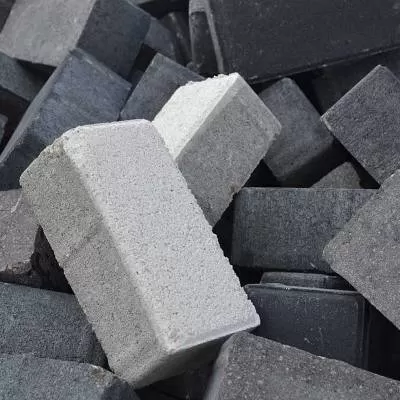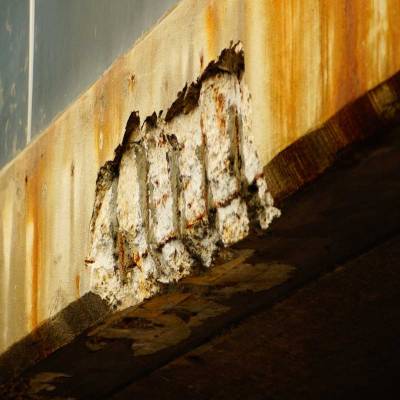- Home
- Building Material
- Concrete
- Branding Exercise
Branding Exercise
In an increasingly competitive construction industry, Alisha Patel explores how the industry players are finding more and more value in branding their products.
For a sector that has never traditionally placed huge emphasis on branding, the Indian construction industry is veering away from the norm. With double-digit growth forecasts and unprecedented competition, real-estate developers and building material manufacturers hold brand promises and value propositions more vital now than ever before. With India becoming a global force to be reckoned with, increased market share is a major objective for most construction companies - and one that is closely linked to a brand’s success.
How crucial is branding?
There is very little doubt that the branding phenomenon in India is going through a major metamorphosis, especially in the construction industry. According to Rohan Talwar, Director, Nitco Tiles, consumers in the construction field are increasingly looking for a brand. “Just as in any other industry, a company’s brand stands for something in the construction industry. All consumers choose products for a particular reason. Our distinct brand identity is what generates our sales. Therefore, our brand is everything. It is the life force of our business. Without it, we would have no competitive edge.”
Girish Rao, CEO, Essar Hypermart, India’s largest chain of steel retail outlets, too believes that like consumers, builders are looking for a brand. “A brand’s perception is something that is very important and can only be created over time,” he says. “It can influence the user, who in our case is the builder. We brand all our products and our name is on everything. Sahi Quality, Sahi Price, Sahi Delivery is our brand promise and I think we deliver on it.” He adds with a grin, “It’s a challenge to brand steel but we’ve managed to make a boring product fun.”
Builders and contractors aren’t bucking the trend either. “For core raw materials that determine the quality of the building, we insist on branded goods, e.g. steel, cement, copper,” affirms Deepak Vasandani, Director, Aanya Real Estate. “There is no compromise on this whatsoever.” Suresh Jain, Managing Director, Vijayshanti Builders, in Chennai, says, “Our brand promises the best of quality and customer satisfaction. It carries a guarantee of clear title and best timely delivery. As a brand, we offer guarantees for the material used inside each home.”
According to Gauri Pohoomul, Managing Director, Daftary Descon Engineering Pvt Ltd, contractors also insist on branded goods today. “At our company, we go for reputed, quality brands,” she elaborates. “Reputed brands follow IS code, specifications, tolerances, torques and strengths required for each specific material. We would not compromise on quality and go for non-branded materials, as materials make up about 70 per cent of any construction. There is no guarantee that non-branded goods follow any quality protocols, and they may compromise the structural strength of a construction.”
Indeed, these views make it clear that the desire to build and grow home-grown brands is burgeoning. Owing to rising demand for branded products, advertising and marketing campaigns by individual promoters are gaining a central role in businesses. After one of the world’s worst economic downturns last year, branding has emerged as a prominent tool to help market players overcome their losses. In an exciting new period in India’s economic history, material manufacturers and real-estate developers alike are stepping up their branding game.
Brand-building activities
“We have a 360° marketing approach through hoardings, print ads, OOH and radio,” reveals Rao. “We find this a very good way of advertising though, of course, advertising is only one part of branding. Our marketing is a core way to build our brand. Our strategy is based on customer testimonials that often become our print ads. For us, the customer is the key.” Associating Essar Hypermart with properties like the Essar Infrastructure Awards is also a key part of the company’s strategy. Rao believes that such forums allow architects and contractors to jointly learn about newer technologies using products such as steel; in sponsoring these events Essar Hypermart can add value to its brand.
Michael Schmid-Lindenmayer, Managing Director, Putzmeister Concrete Machines Pvt Ltd, is equally gung-ho about branding activities in India. He believes that the branding process has been integral to the growth of the world’s largest producer of concrete pumps in Asia’s second-fastest growing economy. “Trade shows are one of the biggest brand-building opportunities for us,” he says. “Advertising in mainline and trade magazines is also an important part of branding as are direct relationship programmes with some of our customers, mainly our key accounts.” He is emphatic when he states that highlighting the company’s achievements on communication materials is a unique way of setting Putzmeister apart from its competition. “Burj Dubai was made by using our concrete machines,” he says with pride. “We hold the world record for pumping concrete at a height of 606 m at Burj Dubai. We have the world’s largest truck mounted boom-pump, the M70. We highlight all these things in our different materials.” Interestingly enough, Putzmeister has also designed special machines for the Indian market and has taken only three years to become a market leader in the truck-mounted, boom-pump segment. “This is because of branding and awareness in the Indian market,” he adds.
At Hindalco, Asia’s largest integrated primary producer of aluminium, Kedar Rele, Head - Market Development, believes both ‘ATL’ (Above the line) and ‘BTL’ (Below the line) marketing activities are essential for a brand’s success. The company’s major objective is to “increase brand awareness and engage the user via branding”. Print and TV media form one part of branding (ATL) and on-ground activation programmes and testimonials form another important component (BTL). According to Rele, Hindalco spends about Rs 5.5 crore annually on its branding activities.
Measuring a brand’s success
How does one measure the success of their branding? Most construction, raw material, and real-estate companies believe that growth, customer loyalty and sales are the only quantifiable measure of branding at the moment. To date the market seems too nascent to embrace traditional brand audits or measures on conventional dimensions like awareness levels, scoring of products and customer service.
“As in all advertising-related areas, it is very difficult to quantify a brand’s success,” says Rao. “However, Essar Hypermart has grown from 0.6 million tonne to 1.2 million tonne and to my mind the best measure is the kind of growth we have had along with customer stickiness. The more customers I get and the more they come back to me is a measure of my branding.” Like Rao, Nitin Sawale, Vice-President - Sales and Marketing, Shalimar Paints, believes repeat customers are a way to measure the success of one’s branding initiatives. “We don’t have an internal, quantifiable way of measuring branding success. We look at repeat customers as a measure. Shalimar Paints doesn’t have the kinds of budgets you need to spend on mass marketing so we use more personalised approaches such as direct mailers and emails.”
Akin to his colleagues in other parts of the construction field, Talwar agrees that measuring the success of one’s branding initiatives is a tedious and often difficult task. “There’s no doubt that evaluating the success of branding can never be as scientific as evaluating increases in efficiency in the supply chain or manufacturing process. However, it is possible to have a clear idea of the success of one’s branding initiatives. Whenever we have a campaign at Nitco, we look very closely at our sales figures and try and identify any change during that period. We do this for each region across India. Alternatively we also pay attention to our customer call centre and filled-in questionnaires from stores to find out whether people have come to us because of these particular ads.”
Different strokes
Real-estate developers believe B2C branding is entirely different from the B2B branding that material manufacturers undertake, however. “The styles are very different for both,” says Vasandani. “Buying a house is usually the most expensive purchase and is a considered family decision with all members participating. We market dream homes. Usually, a customer buys a project under development and has to rely on brochures and imagination while putting his money down. For material manufacturers the product is readymade and can be ‘touched’ before purchase.” Vasandani believes building a brand is an ongoing long-term aim that requires consistency and patience. It is a function of time and the legacy of the company: the number of projects, customer satisfaction, successes and failures.
Nishant Mehta, Director, Timber Green Homes, validates Vasandani’s argument. “When it comes to dealing with consumers, the B2C process is very different. Right from the initial interaction, all the way till the end, everything is critical for us as real-estate developers,” he says. “For those doing B2B branding, after the point of sale and delivery, everything stops there generally, though good manufacturers will follow up.” Mehta, however, is quick to add, “Branding assists and supports the sale; any sale, whether it is selling homes, fabrics or a plastic bucket. It helps the prospective customer in the decision-making process. A brand cares about its reputation.”
With the development of the Indian market and increased competition, a certain number of companies have started putting more focus on branding after they have discovered the economic power of a strong brand. Needless to say, a strong brand sells better at higher prices. According to Vasandani, Indian consumers attribute a halo effect to brands with good track records. This makes them seem invincible at a period when the branding movement is still nascent. This developer believes that as the market matures and each brand jockeys for its individual positioning, such brands will have to rely less on legacy alone.
Nature of branding
“The nature of branding has also undergone a change,” avers Vasandani. “Instead of selling plain bricks and mortar products, some builders have progressed to promoting lifestyles, communities and a better quality of life. As more new products like townships enter the Indian market, several new ways of branding will open up. At the same time, many other companies are still working with a commoditised mindset. Build, build, build; then sell, sell, sell. A basic corporate identity and a few millions in communication make them feel happy. This is true of even several well-regarded brands. We expect to see interesting developments over the next few years as builders try to ‘own’ certain aspects (luxury, quality, innovation) when it comes to brand positioning.”
To this Mehta adds, “Historically, and even for most builders today, functional marketing has been the name of the game. However, one is now seeing a change. A few builders are now changing to more aspirational marketing as part of their brand-building efforts. Astute builders are getting more scientific in their approach to branding and are paying attention to the tiniest details.” According to him, these include the point of entry, brochures, walk-through videos, models, layout of sample flat and sales office, training sales staff, and the sales process. He believes after-sales service has become extremely important in building a brand. Word of mouth and testimonials from residents, too, matter more than ever now.
At Vijayshanti Builders in Chennai, marketing homes to the upmarket segment is a very important part of the brand-building business. Exclusivity is a key characteristic for marketing their most expensive projects. While the company offers both premium and affordable ones, both are promoted very differently. Vijayshanti believes building a brand is no easy task; however, it can be achieved by strong advertising, sponsoring events, using brochures and mailers. It is also essential that every launch is different to ensure a successful brand. “For instance, our latest project, The Art, at Kothari Road has the theme of Picasso’s Cubist painting running through and this is showcased in the ads,” says Jain. “There is only one apartment per floor and a lot of open space. We also make sure that when it comes to events for this segment, we go in for art shows, artistic dance and social gatherings. For the affordable housing segment, we intend to go in for events like carnivals, plays, and music concerts.” Now, that’s what you call celebrating your brand!
“A brand’s perception is something that is very important and can only be created over time.”-Girish Rao, CEO, ESSAR HYPERMART
“Both ‘ATL’ and ‘BTL’ marketing activities are essential for a brand’s success. “-Kedar Rele, Head - Market Development, HINDALCO
“Repeat customers are a way to measure the success of one’s branding initiatives.”-Nitin Sawale, Vice-President - Sales and Marketing, SHALIMAR PAINTS
“Evaluating the success of branding can never be as scientific as evaluating increases in efficiency in the supply chain or manufacturing process.”- Rohan Talwar, Director, NITCO TILES
“A few builders are now changing to more aspirational marketing as part of their brand-building efforts.”-Nishant Mehta, Director, TIMBER GREEN HOMES
“As more new products like townships enter the Indian market, several new ways of branding will open up.”-Deepak Vasandani, Director, AANYA REAL ESTATE
“Reputed brands follow IS code, specifications, tolerances, torques and strengths required for each specific material.”-Gauri Pohoomul, Managing Director, DAFTARY DESCON ENGINEERING
“Trade shows are one of the biggest brand-building opportunities for us.”-Michael Schmid-Lindenmayer, Managing Director, PUTZMEISTER CONCRETE MACHINES
“As a brand, we offer guarantees for the material used inside each home.”-Suresh Jain, Managing Director, VIJAYSHANTI BUILDERS
- Construction
- Update
- Portal
- Magazine
- India
- July
- 2010
- World
- branding
- competition
- real estate
- building
- material
- Rohan Talwar
- Nitco Tiles
- Girish Rao
- Essar
- Hypermart
- Sahi
- Quality
- Price
- Delivery
- Builders
- contractors
- Deepak Vasandani
- Aanya
- Suresh Jain
- Vijayshanti
- Chennai
- Gauri Pohoomul
- Daftary
- Descon
- IS code
- economic
- downturns
- OOH
- testimonials
- Michael Schmid-Lindenmayer
- Putzmeister
- Concrete
- Machines
- Advertising
- trade
- magazines
- Burj Dubai
- Hindalco
- Kedar Rele
- Nitin Sawale
- Shalimar
- Paints
- customer
- call centre
- B2C
- Nishant Mehta
- Timber
- Green
- Homes
- communication
- brochures
- videos
- models
- Picasso
- Cubist
- painting
- The Art
- Kothari
- gatherings
- sponsoring
In an increasingly competitive construction industry, Alisha Patel explores how the industry players are finding more and more value in branding their products. For a sector that has never traditionally placed huge emphasis on branding, the Indian construction industry is veering away from the norm. With double-digit growth forecasts and unprecedented competition, real-estate developers and building material manufacturers hold brand promises and value propositions more vital now than ever before. With India becoming a global force to be reckoned with, increased market share is a major objective for most construction companies - and one that is closely linked to a brand’s success. How crucial is branding? There is very little doubt that the branding phenomenon in India is going through a major metamorphosis, especially in the construction industry. According to Rohan Talwar, Director, Nitco Tiles, consumers in the construction field are increasingly looking for a brand. “Just as in any other industry, a company’s brand stands for something in the construction industry. All consumers choose products for a particular reason. Our distinct brand identity is what generates our sales. Therefore, our brand is everything. It is the life force of our business. Without it, we would have no competitive edge.” Girish Rao, CEO, Essar Hypermart, India’s largest chain of steel retail outlets, too believes that like consumers, builders are looking for a brand. “A brand’s perception is something that is very important and can only be created over time,” he says. “It can influence the user, who in our case is the builder. We brand all our products and our name is on everything. Sahi Quality, Sahi Price, Sahi Delivery is our brand promise and I think we deliver on it.” He adds with a grin, “It’s a challenge to brand steel but we’ve managed to make a boring product fun.” Builders and contractors aren’t bucking the trend either. “For core raw materials that determine the quality of the building, we insist on branded goods, e.g. steel, cement, copper,” affirms Deepak Vasandani, Director, Aanya Real Estate. “There is no compromise on this whatsoever.” Suresh Jain, Managing Director, Vijayshanti Builders, in Chennai, says, “Our brand promises the best of quality and customer satisfaction. It carries a guarantee of clear title and best timely delivery. As a brand, we offer guarantees for the material used inside each home.” According to Gauri Pohoomul, Managing Director, Daftary Descon Engineering Pvt Ltd, contractors also insist on branded goods today. “At our company, we go for reputed, quality brands,” she elaborates. “Reputed brands follow IS code, specifications, tolerances, torques and strengths required for each specific material. We would not compromise on quality and go for non-branded materials, as materials make up about 70 per cent of any construction. There is no guarantee that non-branded goods follow any quality protocols, and they may compromise the structural strength of a construction.” Indeed, these views make it clear that the desire to build and grow home-grown brands is burgeoning. Owing to rising demand for branded products, advertising and marketing campaigns by individual promoters are gaining a central role in businesses. After one of the world’s worst economic downturns last year, branding has emerged as a prominent tool to help market players overcome their losses. In an exciting new period in India’s economic history, material manufacturers and real-estate developers alike are stepping up their branding game. Brand-building activities “We have a 360° marketing approach through hoardings, print ads, OOH and radio,” reveals Rao. “We find this a very good way of advertising though, of course, advertising is only one part of branding. Our marketing is a core way to build our brand. Our strategy is based on customer testimonials that often become our print ads. For us, the customer is the key.” Associating Essar Hypermart with properties like the Essar Infrastructure Awards is also a key part of the company’s strategy. Rao believes that such forums allow architects and contractors to jointly learn about newer technologies using products such as steel; in sponsoring these events Essar Hypermart can add value to its brand. Michael Schmid-Lindenmayer, Managing Director, Putzmeister Concrete Machines Pvt Ltd, is equally gung-ho about branding activities in India. He believes that the branding process has been integral to the growth of the world’s largest producer of concrete pumps in Asia’s second-fastest growing economy. “Trade shows are one of the biggest brand-building opportunities for us,” he says. “Advertising in mainline and trade magazines is also an important part of branding as are direct relationship programmes with some of our customers, mainly our key accounts.” He is emphatic when he states that highlighting the company’s achievements on communication materials is a unique way of setting Putzmeister apart from its competition. “Burj Dubai was made by using our concrete machines,” he says with pride. “We hold the world record for pumping concrete at a height of 606 m at Burj Dubai. We have the world’s largest truck mounted boom-pump, the M70. We highlight all these things in our different materials.” Interestingly enough, Putzmeister has also designed special machines for the Indian market and has taken only three years to become a market leader in the truck-mounted, boom-pump segment. “This is because of branding and awareness in the Indian market,” he adds. At Hindalco, Asia’s largest integrated primary producer of aluminium, Kedar Rele, Head - Market Development, believes both ‘ATL’ (Above the line) and ‘BTL’ (Below the line) marketing activities are essential for a brand’s success. The company’s major objective is to “increase brand awareness and engage the user via branding”. Print and TV media form one part of branding (ATL) and on-ground activation programmes and testimonials form another important component (BTL). According to Rele, Hindalco spends about Rs 5.5 crore annually on its branding activities. Measuring a brand’s success How does one measure the success of their branding? Most construction, raw material, and real-estate companies believe that growth, customer loyalty and sales are the only quantifiable measure of branding at the moment. To date the market seems too nascent to embrace traditional brand audits or measures on conventional dimensions like awareness levels, scoring of products and customer service. “As in all advertising-related areas, it is very difficult to quantify a brand’s success,” says Rao. “However, Essar Hypermart has grown from 0.6 million tonne to 1.2 million tonne and to my mind the best measure is the kind of growth we have had along with customer stickiness. The more customers I get and the more they come back to me is a measure of my branding.” Like Rao, Nitin Sawale, Vice-President - Sales and Marketing, Shalimar Paints, believes repeat customers are a way to measure the success of one’s branding initiatives. “We don’t have an internal, quantifiable way of measuring branding success. We look at repeat customers as a measure. Shalimar Paints doesn’t have the kinds of budgets you need to spend on mass marketing so we use more personalised approaches such as direct mailers and emails.” Akin to his colleagues in other parts of the construction field, Talwar agrees that measuring the success of one’s branding initiatives is a tedious and often difficult task. “There’s no doubt that evaluating the success of branding can never be as scientific as evaluating increases in efficiency in the supply chain or manufacturing process. However, it is possible to have a clear idea of the success of one’s branding initiatives. Whenever we have a campaign at Nitco, we look very closely at our sales figures and try and identify any change during that period. We do this for each region across India. Alternatively we also pay attention to our customer call centre and filled-in questionnaires from stores to find out whether people have come to us because of these particular ads.” Different strokes Real-estate developers believe B2C branding is entirely different from the B2B branding that material manufacturers undertake, however. “The styles are very different for both,” says Vasandani. “Buying a house is usually the most expensive purchase and is a considered family decision with all members participating. We market dream homes. Usually, a customer buys a project under development and has to rely on brochures and imagination while putting his money down. For material manufacturers the product is readymade and can be ‘touched’ before purchase.” Vasandani believes building a brand is an ongoing long-term aim that requires consistency and patience. It is a function of time and the legacy of the company: the number of projects, customer satisfaction, successes and failures. Nishant Mehta, Director, Timber Green Homes, validates Vasandani’s argument. “When it comes to dealing with consumers, the B2C process is very different. Right from the initial interaction, all the way till the end, everything is critical for us as real-estate developers,” he says. “For those doing B2B branding, after the point of sale and delivery, everything stops there generally, though good manufacturers will follow up.” Mehta, however, is quick to add, “Branding assists and supports the sale; any sale, whether it is selling homes, fabrics or a plastic bucket. It helps the prospective customer in the decision-making process. A brand cares about its reputation.” With the development of the Indian market and increased competition, a certain number of companies have started putting more focus on branding after they have discovered the economic power of a strong brand. Needless to say, a strong brand sells better at higher prices. According to Vasandani, Indian consumers attribute a halo effect to brands with good track records. This makes them seem invincible at a period when the branding movement is still nascent. This developer believes that as the market matures and each brand jockeys for its individual positioning, such brands will have to rely less on legacy alone. Nature of branding “The nature of branding has also undergone a change,” avers Vasandani. “Instead of selling plain bricks and mortar products, some builders have progressed to promoting lifestyles, communities and a better quality of life. As more new products like townships enter the Indian market, several new ways of branding will open up. At the same time, many other companies are still working with a commoditised mindset. Build, build, build; then sell, sell, sell. A basic corporate identity and a few millions in communication make them feel happy. This is true of even several well-regarded brands. We expect to see interesting developments over the next few years as builders try to ‘own’ certain aspects (luxury, quality, innovation) when it comes to brand positioning.” To this Mehta adds, “Historically, and even for most builders today, functional marketing has been the name of the game. However, one is now seeing a change. A few builders are now changing to more aspirational marketing as part of their brand-building efforts. Astute builders are getting more scientific in their approach to branding and are paying attention to the tiniest details.” According to him, these include the point of entry, brochures, walk-through videos, models, layout of sample flat and sales office, training sales staff, and the sales process. He believes after-sales service has become extremely important in building a brand. Word of mouth and testimonials from residents, too, matter more than ever now. At Vijayshanti Builders in Chennai, marketing homes to the upmarket segment is a very important part of the brand-building business. Exclusivity is a key characteristic for marketing their most expensive projects. While the company offers both premium and affordable ones, both are promoted very differently. Vijayshanti believes building a brand is no easy task; however, it can be achieved by strong advertising, sponsoring events, using brochures and mailers. It is also essential that every launch is different to ensure a successful brand. “For instance, our latest project, The Art, at Kothari Road has the theme of Picasso’s Cubist painting running through and this is showcased in the ads,” says Jain. “There is only one apartment per floor and a lot of open space. We also make sure that when it comes to events for this segment, we go in for art shows, artistic dance and social gatherings. For the affordable housing segment, we intend to go in for events like carnivals, plays, and music concerts.” Now, that’s what you call celebrating your brand! “A brand’s perception is something that is very important and can only be created over time.”-Girish Rao, CEO, ESSAR HYPERMART“Both ‘ATL’ and ‘BTL’ marketing activities are essential for a brand’s success. “-Kedar Rele, Head - Market Development, HINDALCO“Repeat customers are a way to measure the success of one’s branding initiatives.”-Nitin Sawale, Vice-President - Sales and Marketing, SHALIMAR PAINTS“Evaluating the success of branding can never be as scientific as evaluating increases in efficiency in the supply chain or manufacturing process.”- Rohan Talwar, Director, NITCO TILES“A few builders are now changing to more aspirational marketing as part of their brand-building efforts.”-Nishant Mehta, Director, TIMBER GREEN HOMES“As more new products like townships enter the Indian market, several new ways of branding will open up.”-Deepak Vasandani, Director, AANYA REAL ESTATE“Reputed brands follow IS code, specifications, tolerances, torques and strengths required for each specific material.”-Gauri Pohoomul, Managing Director, DAFTARY DESCON ENGINEERING“Trade shows are one of the biggest brand-building opportunities for us.”-Michael Schmid-Lindenmayer, Managing Director, PUTZMEISTER CONCRETE MACHINES“As a brand, we offer guarantees for the material used inside each home.”-Suresh Jain, Managing Director, VIJAYSHANTI BUILDERS
























